Recently, Prof. Sun Daofeng's group of Functional Porous Materialsfrom from College of Science made new findings on the research of functional porous material with four papers published on Journal of Materials Chemistry A,Chemical Communication,CrystEngComn and Analytical Methods.
Prof. Sun Daofeng and his group focus on design and preparation of functionalized MOF (metal organic framework) materials to realize specific properties in order to satisfy the present environmental and energy demands. As crystalline solids, MOFs are constructed of metal ions, or metal clusters, and organic ligands via a self-assembly route, and their architectures present marvelous 3D periodical network structures. Different from either inorganic porous materials or organic complexes, MOFs present both rigidity as inorganic materials and flexibility as organic materials. Moreover, MOFs are the most porous materials having large specific surface areas and multiple active metal sites in their structures. These exotic structural properties enable the widely and successful applications of MOFs in gas storage, gas separation, selective catalysis, sustainable drug release, and bioimaging, which makes MOFs especially significant to modern material research and have promising futures in chemical engineering due to the enormous potentiality. The recently published four cover literatures by Prof. Sun’s group focus on environmental and energy issues, such as gas separation, pollutant sensing and removal, and provide both theoretical and technique support for the energy and environmental applications of MOFs.
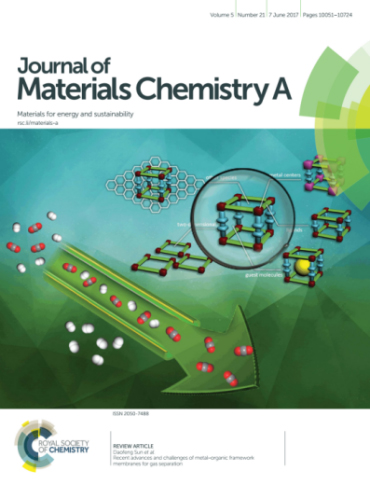
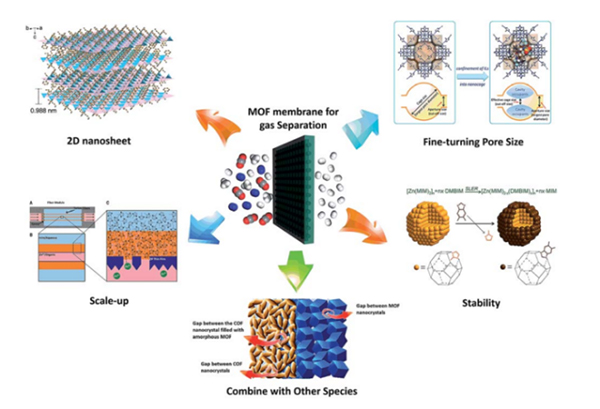
The paper Recent advances and challenges of metal–organic framework membranes for gas separation was published on Jounal of Materials Chemistry A. Gas separation is one of the most critical and challenging steps for industrial processes, and metal–organic framework (MOF) membranes are potential candidates for this application. This review mainly focuses on the recent advances in improving the performance of MOF membranes, involving the issues faced with MOF designation and growth for practical applications. First, it discussed three strategies for permeability and selectivity enhancement of MOF membranes, in terms of obtaining ultra-thin two-dimensional (2D) MOF nanosheets, fine-tuning the pore size of the MOF framework and integrating with other species. Second, it reviewed the recent potential resolutions to the problems of MOF membranes for future practical applications including scale-up preparation and stability improvement. Finally, it summarized our work by providing some general conclusions on the state-of-the-art and an outlook on some development directions of molecule-sieving membranes.
See more about the paper: http://pubs.rsc.org/en/content/articlelanding/2017/ta/c7ta01142c#!divAbstract
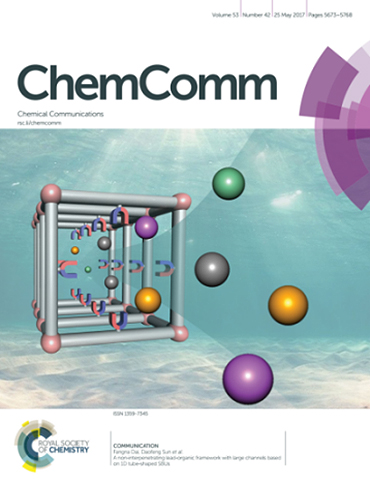

The paper A non-interpenetrating lead-organic framework with large channels based on 1D tube-shaped SBUs was published on Chemical Communication. The work presents the construction of a porous lead-organic framework (UPC-10) with large channels of ∼24 Å. UPC-10 shows efficient adsorption of I2 and selective adsorption of some dyes containing the SO3− group. After the adsorption of dyes, UPC-10 exhibits a CO2 gas uptake ability. Furthermore, UPC-10 could be transformed into PbS in a H2S atmosphere, and the derived PbS manifests N2 and CO2 uptake abilities.
See more about the paper: http://pubs.rsc.org/en/Content/ArticleLanding/2017/CC/C7CC02134H?utm_source=feedburner&utm_medium=feed&utm_campaign=Feed%3A+rss%2FCC+%28RSC+-+Chem.+Commun.+latest+articles%29&utm_content=Google+International#!divAbstract
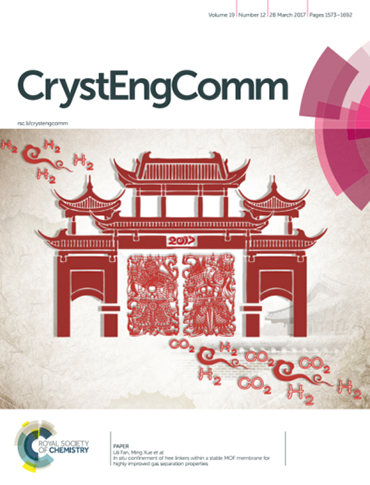
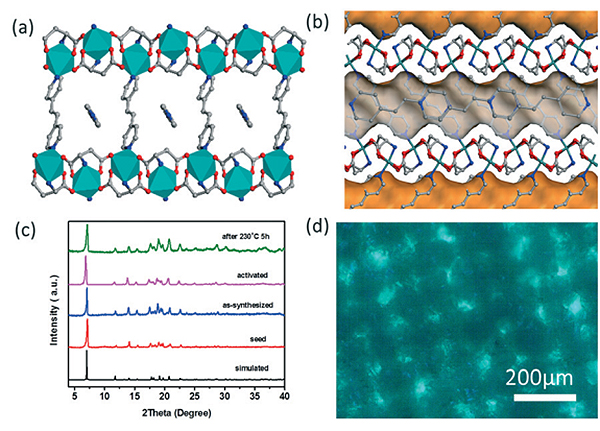
The paper In situ confinement of free linkers within a stable MOF membrane for highly improved gas separation properties was published on CrystEngComm. In the paper, A stable MOF membrane with guest molecules encapsulated in the pores by in situ synthesis has been successfully fabricated. The in situ confinement of linkers in the channels of the MOF membrane improves its gas separation properties, which may provide a general method for fine-tuning the pore size of MOF membranes and develop the functional applications of porous MOF materials.
See more about the paper:
http://pubs.rsc.org/en/Content/ArticleLanding/2017/CE/C7CE00102A#!divAbstract
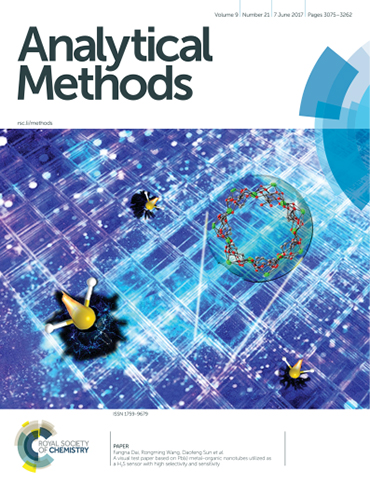
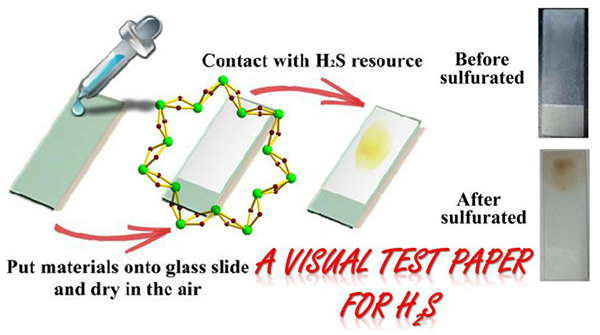
The paper A visual test paper based on Pb(II) metal-organic nanotubes utilized as a H2S sensor with high selectivity and sensitivity was published on Analytical Methods. The fluorescent Pb(II)–metal–organic nanotube, CD-MONT-2, which possesses a large {Pb14} metallamacrocycle, is synthesized by a modified biphasic liquid–solid–liquid (BLSL) strategy. This strategy takes advantage of solid cyclohexanol to avoid generation of by-products, and is suitable for producing CD-MONT-2 on a large scale. Importantly, water-stable CD-MONT-2 can be easily made into H2S test papers by coating a solution mixture of sodium carboxymethyl cellulose and CD-MONT-2′ on glass plates, which have the characteristics of high efficiency, rapidity, and visualization based on its fluorescence “turn-off” response. The CD-MONT-2 based visual test papers can be used without pretreatment and possess excellent sensitivity and stability.
See more about the paper:
http://pubs.rsc.org/en/content/articlelanding/2017/ay/c7ay00627f#!divAbstract
Editor: Bu Lingduo
Source: UPC News Center
Updatetime: 2017-06-14